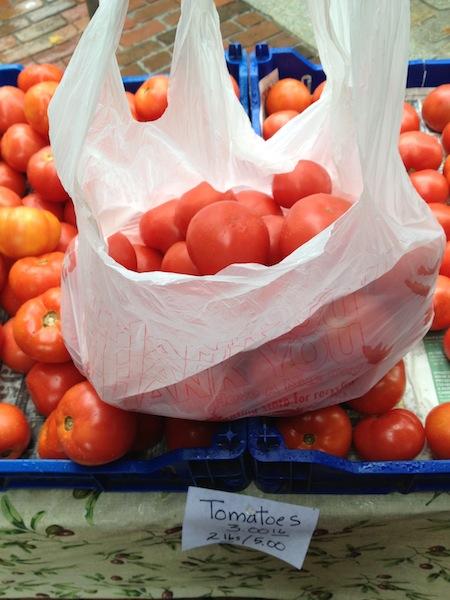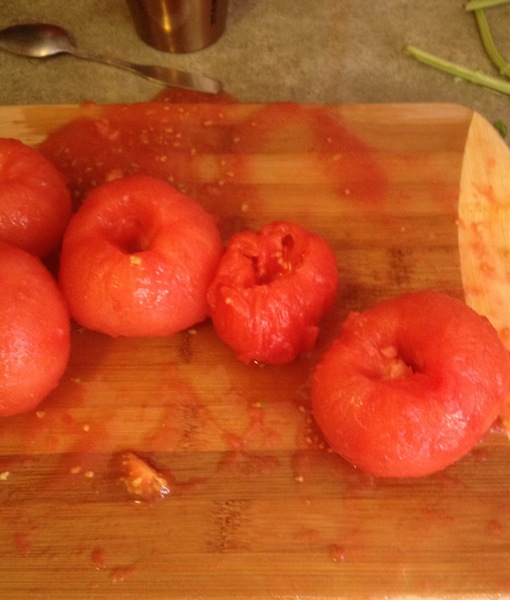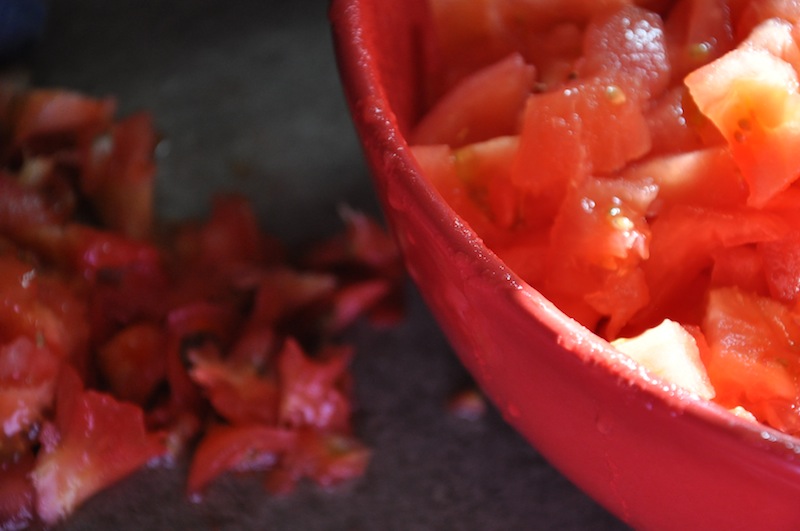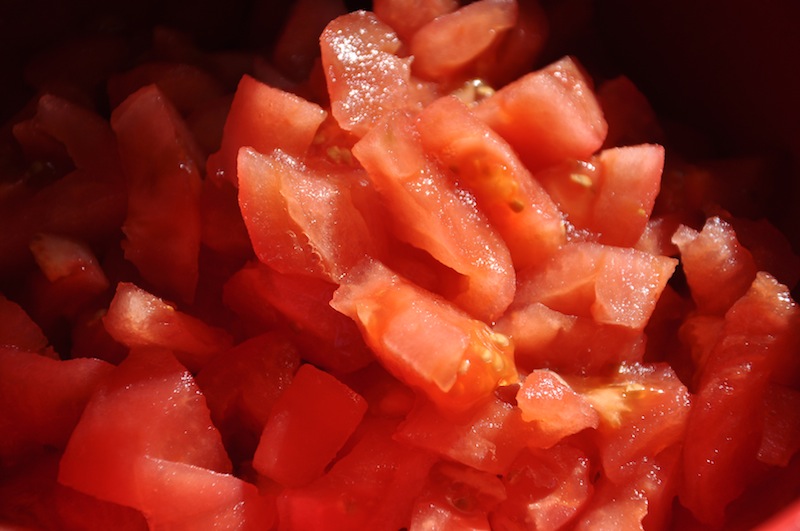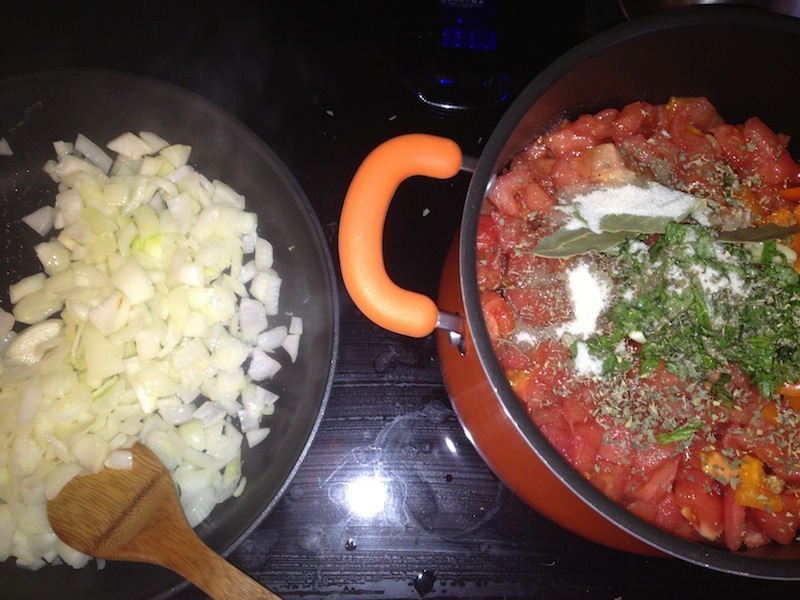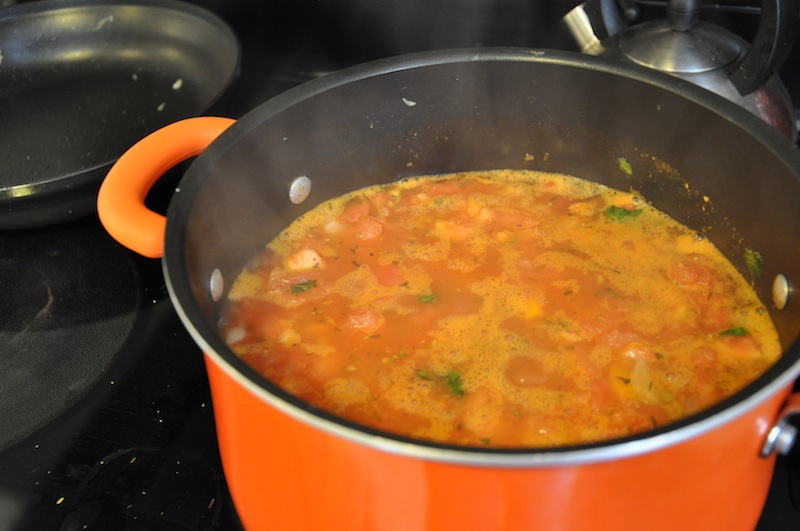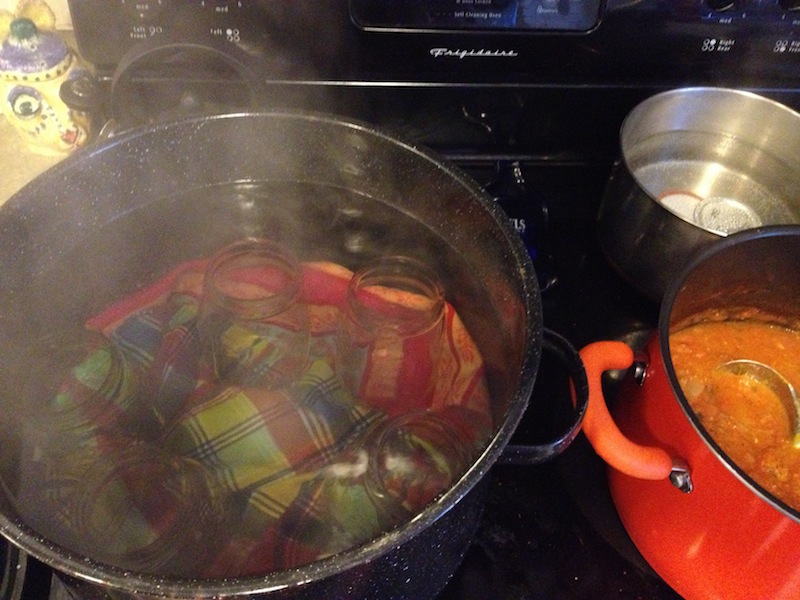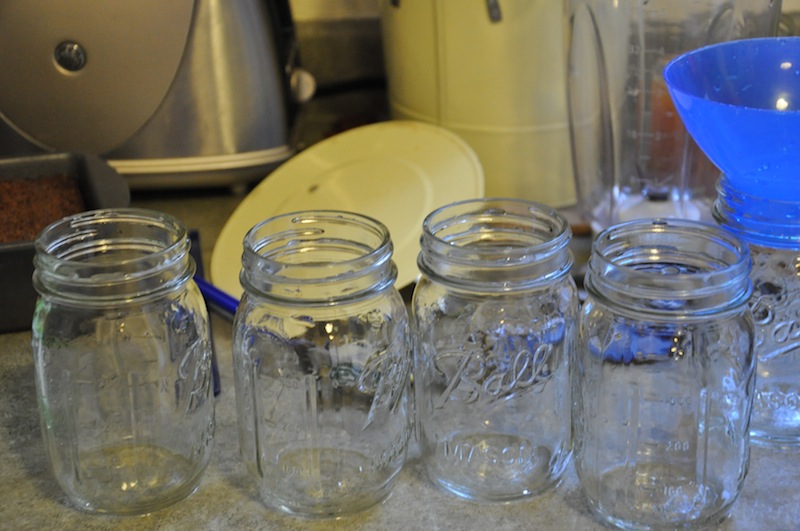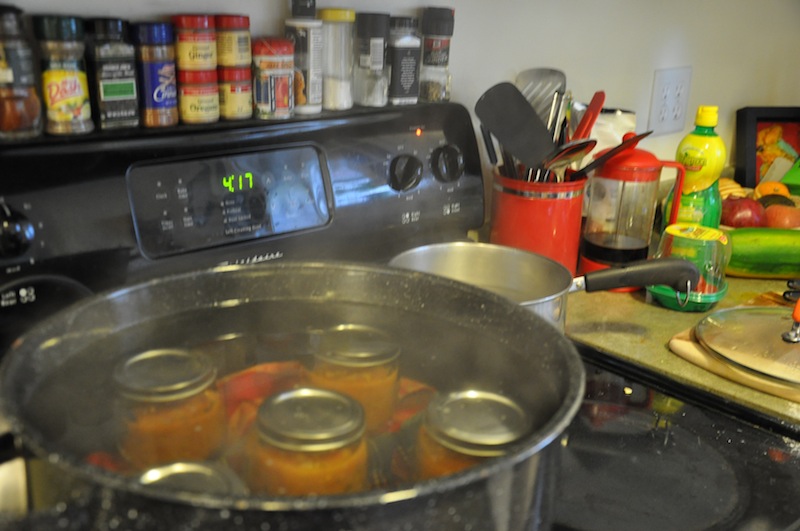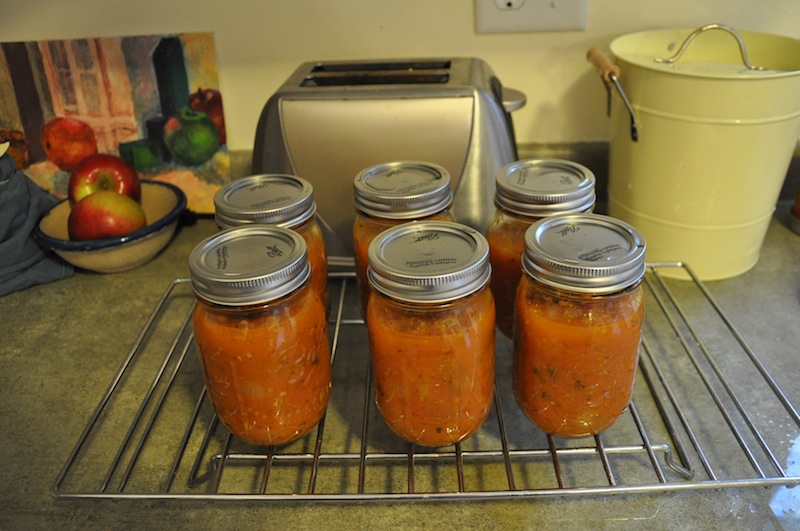30x30 :: Sauced
I did it. I bought ten pounds of tomatoes at the farmers market - I made sauce - I canned it.
I'm going to try to channel my inner Joy the Baker (because I love her) and show off my culinary prowess unfortunately; my kitchen isn't nearly as sexy as hers.
Here's the how to:
Buy your tomatoes - or better yet - grow them! I bought 10 pounds.
I washed them, and then sliced little x's into the bottoms. I then dropped them into boiling hot water. As soon as I could see the x's start to peel I scooped them out and dropped them into ice cold water. The peels then slid right off.
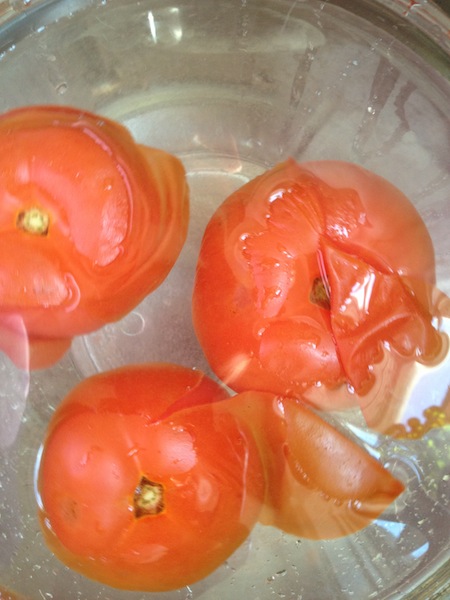 Next I cored them - or cut out the pits. In retrospect, I'd have done this in the prepping stage when I was slicing the x's. I had to really manhandle the tomatoes with no skins on them. It was messy and I felt like I was damaging them (which is silly because then I cooked them forever).
Next I cored them - or cut out the pits. In retrospect, I'd have done this in the prepping stage when I was slicing the x's. I had to really manhandle the tomatoes with no skins on them. It was messy and I felt like I was damaging them (which is silly because then I cooked them forever).
It's now time to chop, slice and dice.
Throw your tomatoes into a large stockpot along with any other vegetables and seasonings you'd like to use. I added: two tablespoons of cane sugar, two onions, an orange bell pepper that was shriveling up in my fridge, a boat load of garlic, three bay leaves, two handfuls of chopped basil, some dried spices (my picks were oregano, thyme and more basil), salt and pepper. I had sautéed my garlic and onions for a bit before dropping them into my tomato concoction. Please Note! Water bath canning is used primarily for preserving high-acid foods. Tomatoes are naturally acidic however; if you start adding in lots of other veggies or goodies you'll need to bump the acidity level back up. Because I was winging it I decided to add three tablespoons of lemon juice into the mix just to be careful.
I brought my tomatoey goodness to a boil and then turned the heat down and let it simmer. I read several recipes out in the interwebz and decided to leave my pot 'partially covered'. I won't do that again. It took forever for my sauce to thicken and there was a lot of water on the surface. I ended up simmering it for about three hours then I used a ladle to remove a lot of the water. I then uncovered it and let it simmer for another hour. It seems like with an uncovered pot I would have simmered for far less than four hours. The good news is that while my simmering was going on I broiled peaches, roasted some hearty vegetables and baked some zucchini bread. Go me!
I filled up my 'canning kettle' (i.e. big pot I use for boiling lobsters), put my mason jars in it, and brought it to a rapid boil. I put a small saucepan on the back burner and got the water hot but not boiling. I put in the lids and let them sit back there. I soon figured out that because I didn't have the canning rack my jars were going to bang around a lot and maybe get damaged. So I took them all out and put two dishcloths at the bottom of the pot. This worked just fine.
Once my jars were sterilized I took them out one by one and filled them with the sauce. I filled them to about half an inch below the top as is recommended. (My sauce has since settled substantially. I think the space is especially important for things like apples that release air.) I then dropped a lid onto the jar using my magnetic lid picker upper. Next, the band went on and then I plopped it back into the hot water on the stove.
I brought the water back up to a boil once all of my jars were in my lobster pot. The point when the water boils is when you can begin timing your water bath. I read a bunch of different things and decided on a time of 35 minutes. The time allotted is the time it will take to kill the bacteria and microorganisms in your sauce. Using the dishcloths meant that the water didn't boil normally - the bubbles were getting trapped. I just kept the heat up and assumed it was boiling.
At the thirty-five minute mark (or somewhere thereafter) I used my can puller and placed the jars onto a cooling rack. It took about an hour for things to really cool down enough for me to be able to tell that the lids had indeed sealed. No popping tins here! Please note! If your tins pop then you do not have a proper seal and you should then freeze the sauce or eat it right away!
There you have it! Spaghetti Sauce made by me and preserved by me!
Remember when I said my kitchen wasn't sexy? I wasn't lying. This is what my kitchen looked like mid project:
So, what have you learned, Grasshopper?
1. There is a reason ladies used to sit around houses cooking and swapping culinary tales.
- Who but your mother and girlfriends (m&gf's) are going to tell you to cut x's in the bottom of your tomato?
- Who but your m&gf's are going to tell you to add some lemon juice?
- Who but your m&gf's are going to tell you not to boil the lids?
- The art of canning and in general the art of being a Domestic Goddess is not common sense. They're skills you're taught...or you read blogs and gawk at Pinterest to cultivate some Susie-Homemaker-Skills of your own.
2. Gather your resources.
- Ball's Fresh Preserving site is an excellent resource. I followed a lot of their instructions.
- Find some recipes you like and then do your thang. I modified this one.
- Then of course you can read the dummies guide to canning. Works for me!
- As always, check out some blogs! I luuuurve reading blogs. Food in Jars is a good one.
3. Canning isn't necessarily affordable.
- Tomatoes - $25
- Other ingredients - $10
- Canning supplies - $35
- Grand Total - $70
- I yielded 6 pints of sauce (or 12 cups).
- A standard jar of sauce is 1.5 pints (or 3 cups).
- This means I essentially spent $11.67 per pint (which contains one less cup than the store size jar).

